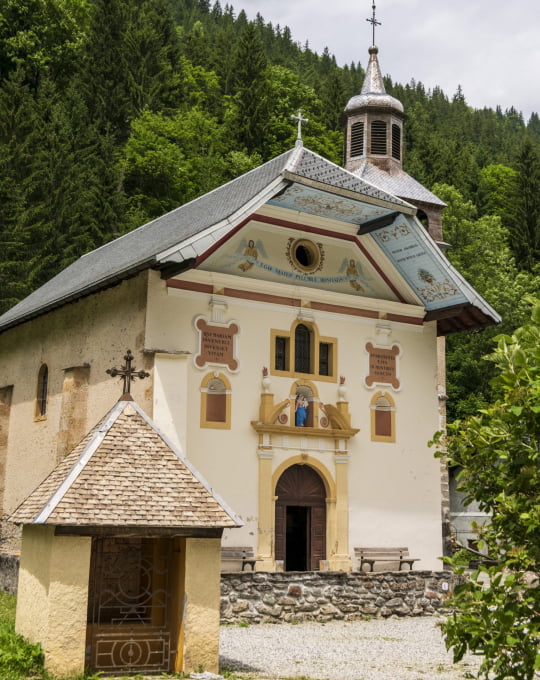Baroque paths and trails
ON THE CHEMINS DU BAROQUE® IN THE SAVOIE
Created in 1992 by the FACIM, the Chemins du Baroque® include close to 80 structures in the Savoy area.
This heritage can be discovered whilst roaming, whether by foot, bike, or car. When the weather is nice, set out on these two circuits—well-kept secrets among the classic trails.
Starting in Séez, head for Montvalezan and then La Gurraz and Tignes Les Boisses to admire the village architecture and the treasures the churches hold.
A bit farther, on the Versant du Soleil side of the valley, leave Granier to reach the Côte d'Aime, then the hamlet of Picolard, and lastly Valezan.
This panoramic route offers splendid views of the Tarentaise and Vanoise ranges.
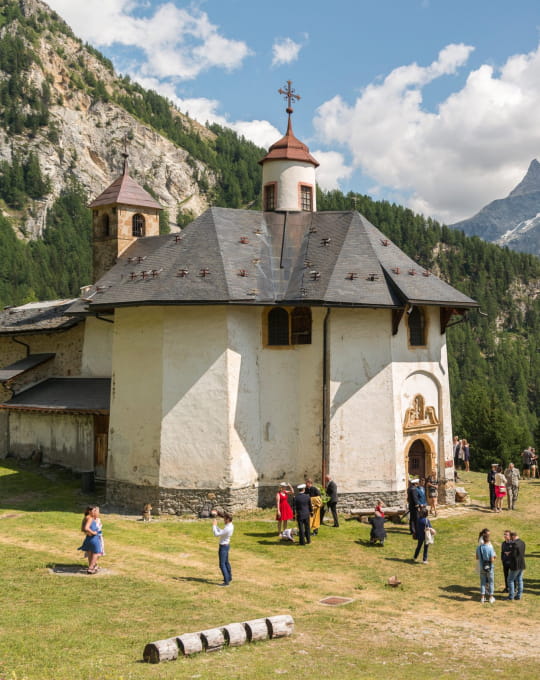
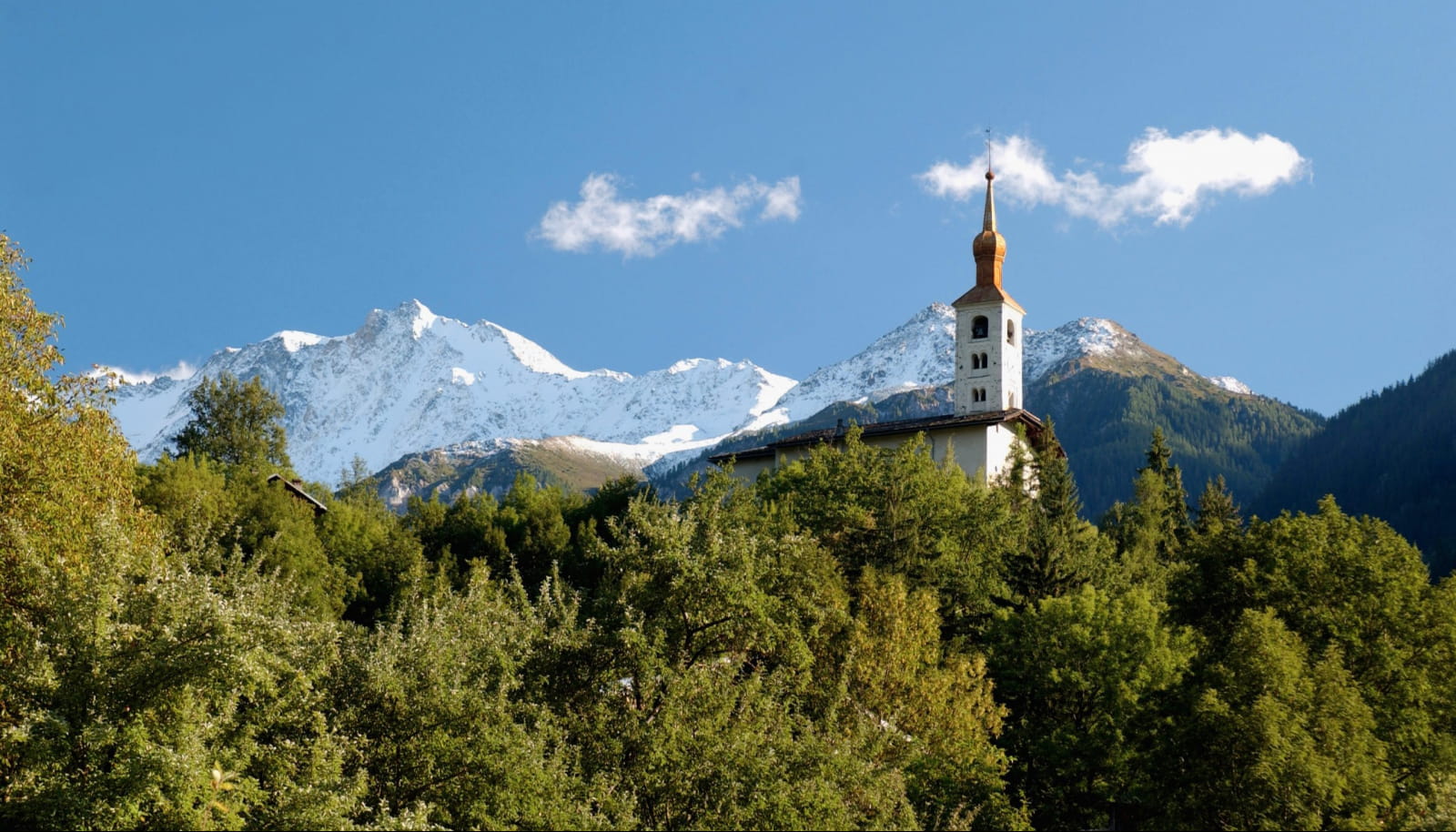
Eye-catching baroque art is stunning and fascinating. Whilst it displays a certain ostentation in larger cities, here, it maintains discretion and moderation.
It is very moving to enter the smaller buildings as they are less well known but possess the same charm as the others', affirms Sylvie Gotteland, a guide at the FACIM Foundation.
In the Beaufortain and Val d'Arly, the churches in Queige, Hauteluce, and Beaufort (the sculpted pulpit is worth the detour) contain a certain artistic unity, with each valley possessing its own baroque style.
Artists were often associated with a territory. 'We see common themes or saints in several villages within the same valley', Sylvie Gotteland explains
In the Maurienne, local painters and sculptures created the baroque works, whereas, in the Tarentaise, the artists frequently hailed from Piedmont, Italy. From Avrieux, we can reach Sollières, then Termignon and Lanslebourg.
Two small gems stand out for visitors: the chapels in Bessans and Lanslevillard.
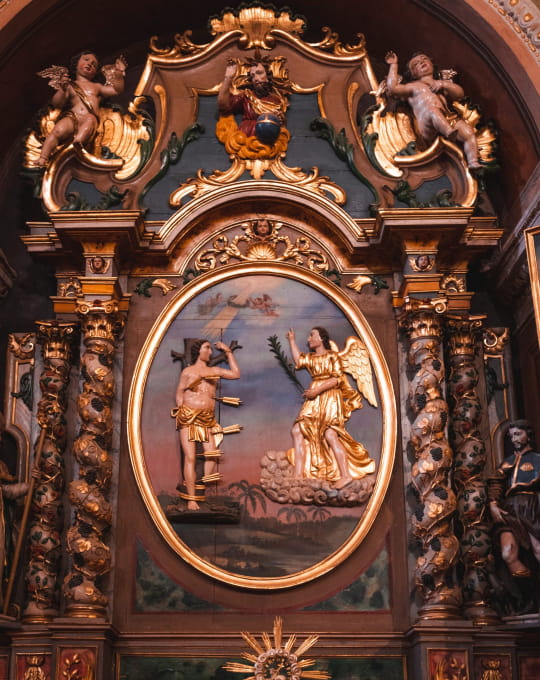
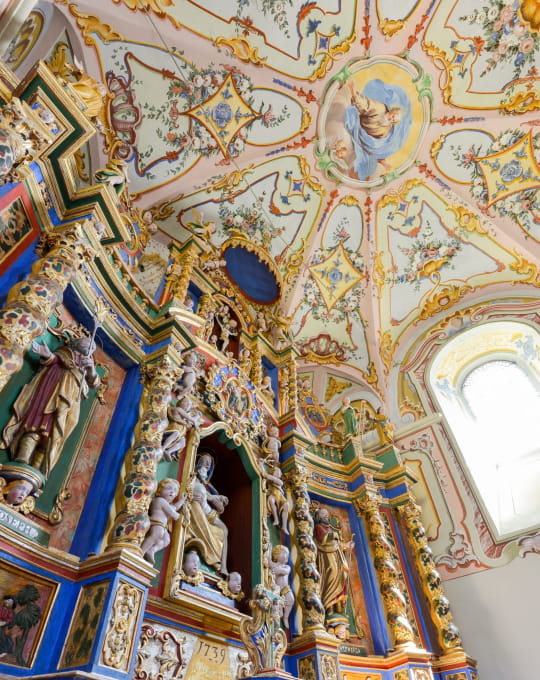

In winter—when many places close their doors or reduce visiting hours—moving around becomes a bit more difficult.
We turn our attention to the churches found within the ski resort areas, such as Beaufort, Arêches, Hauteluce, Valloire, Saint Sorlin d’Arves, Val d’Isère, Hauteville-Gondon, and Champagny.
A trek of a bit under an hour on foot or with snowshoes brings you to Notre-Dame des Vernettes in the Peisey-Nancroix Valley or the Notre-Dame de la Vie sanctuary in Saint Martin de Belleville.
THE BAROQUE TRAIL IN HAUTE-SAVOIE
Unlike the Savoie, where clusters of villages contain a host of religious structures and objects, Haute-Savoie habitats are less spread out. Enjoying baroque art is easier since the works are concentrated.
The Baroque Trail (Sentier du Baroque) is the most renowned circuit in the area—a journey not to be missed. From Combloux to Contamines-Montjoie via Saint Gervais and Saint Nicolas de Véroce, the 20-kilometre cliff edge trail can be done on foot or mountain bike.
The entire Haute-Savoie area is packed with small chapels, veritable treasures, like the ones found in Chattrix and Chevaline. More imposing churches exhibit artistic abundance in the cities, such as the Church of Saint Francis in Annecy. Other buildings distinguish themselves through their unique works, like the four-storey altarpiece in the church in Thônes.
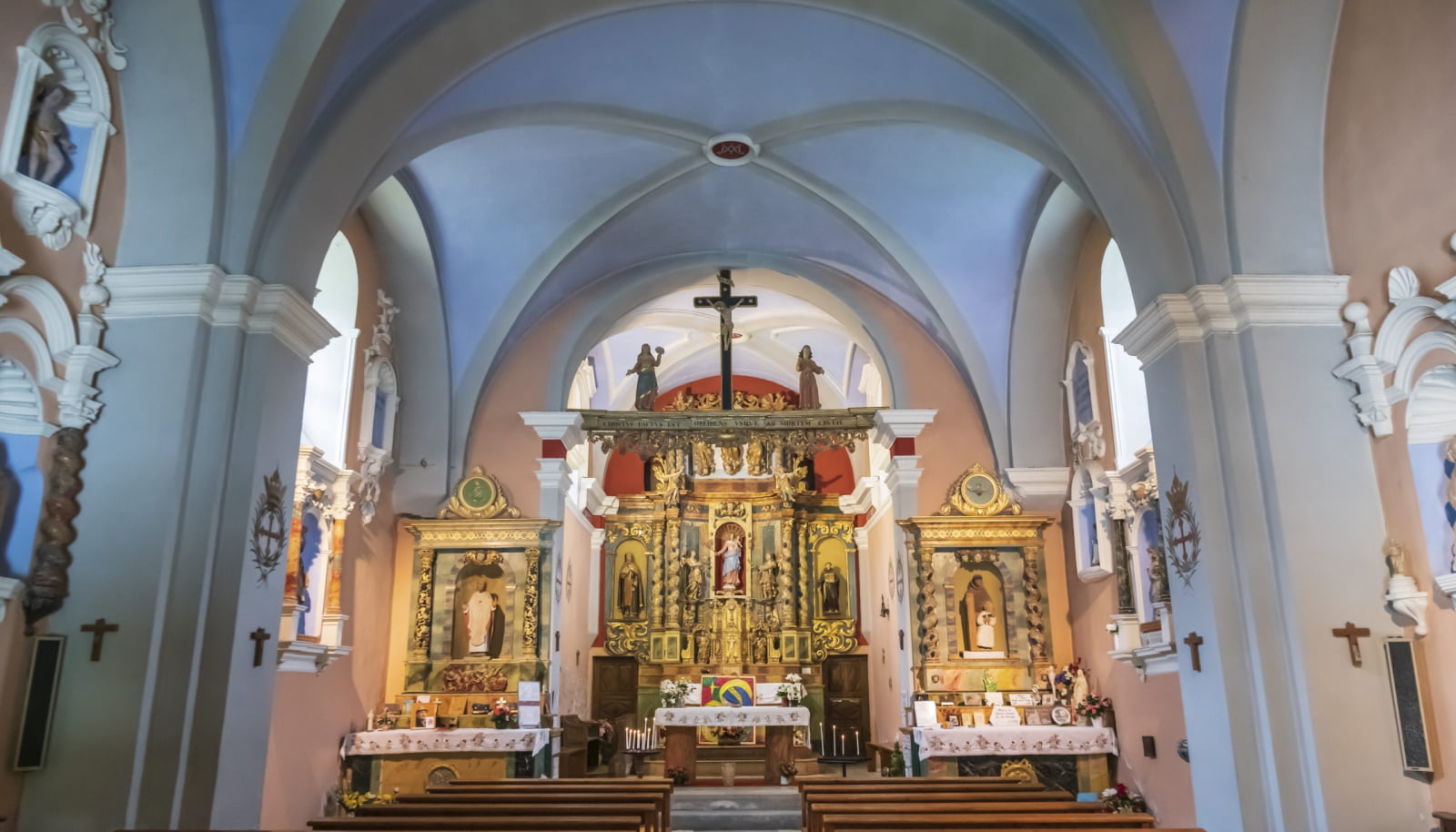
BAROQUE FESTIVALe
In July, the entire Mont Blanc region lives baroque style during the Cordon Baroque Festival. Over a dozen days, music, architecture, and local history come together to celebrate the baroque spirit of long ago.
Set out on a festive trek from Megève to Passy, Domancy to Sallanches, or Servoz to Praz-sur-Arly.
Once winter arrives, the churches and chapels hide under the snow. At the end of a great day of skiing or a jaunt on snowshoes on the Baroque Trail, the contrasts between the immaculate white snow cover on the outside and the bright colours and golden décor within are striking.
Mag Emotions Savoie Mont Blanc n°14 - Marie Paturel / YPM
